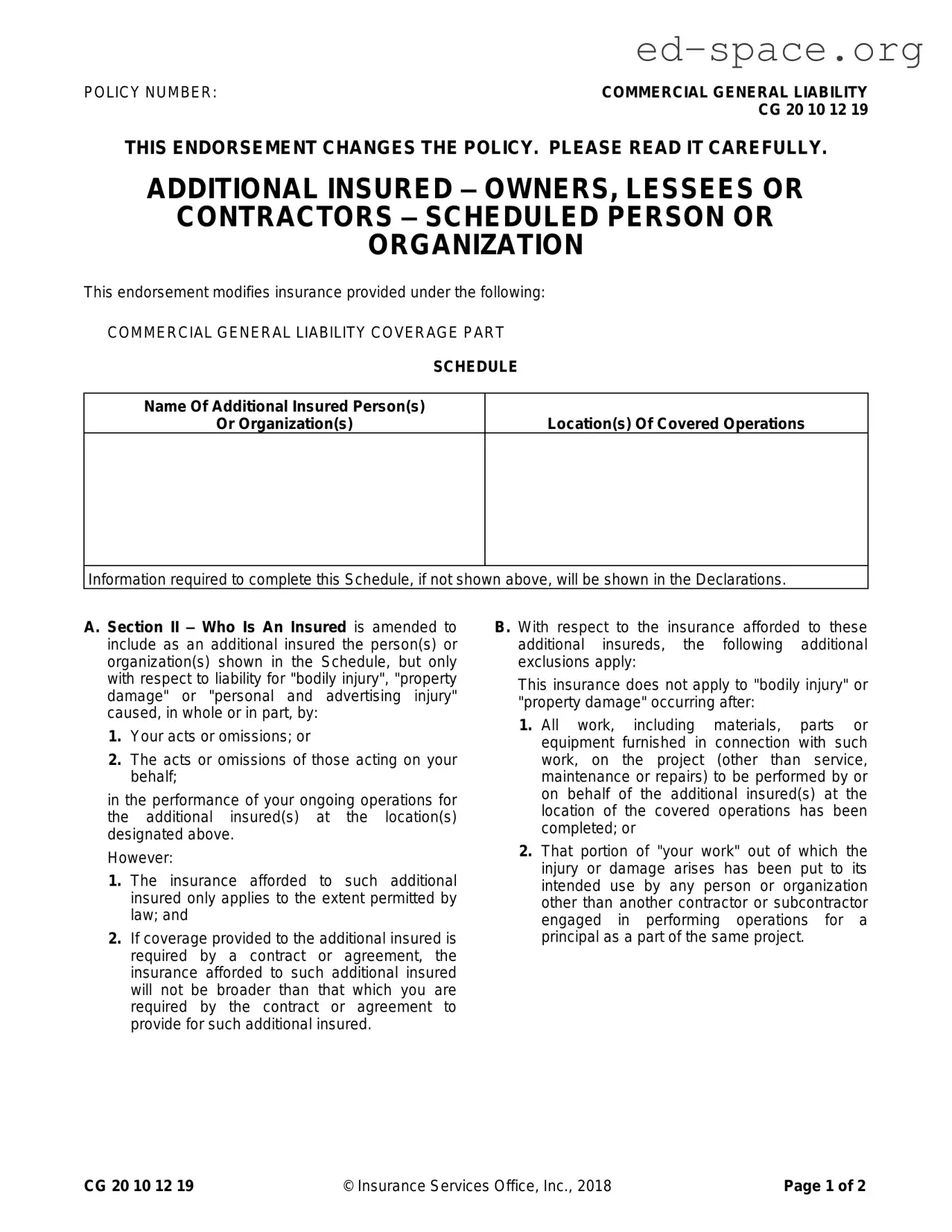What is the purpose of the CG 20 10 07 04 Liability Endorsement form?
The CG 20 10 07 04 Liability Endorsement form is designed to amend a commercial general liability (CGL) policy by specifying additional insureds. Essentially, it extends coverage to other individuals or organizations (as outlined in the policy’s schedule) for liability arising from the policyholder’s actions or the actions of those working on their behalf. This is crucial in many business arrangements, such as leases or contracts where a party requires added protection against potential claims.
Who can be added as an additional insured under this endorsement?
Under the CG 20 10, additional insureds can include owners, lessees, or contractors that the policyholder specifies in the policy’s schedule. These entities become covered only concerning liability for bodily injury, property damage, or personal and advertising injury that originates, completely or partially, from the policyholder’s operations or those conducted on their behalf. The addition is subject to the conditions and exclusions set forth in the endorsement and the underlying policy.
Are there any exclusions or limitations to the coverage extended to additional insureds?
Yes, the endorsement contains specific exclusions and limitations on the coverage extended to additional insureds. For instance, additional insureds are covered only to the extent the law allows and only within the scope required by any contract or agreement necessitating their addition. Coverage does not apply to injuries or damages occurring after all work at the designated location is completed or after completed work has been put to its intended use. Additionally, the most insurance companies will pay on behalf of an additional insured is the amount required by contract or the limits of the insurance, whichever is less, without increasing the overall limits of insurance.
What happens if the coverage required by a contract exceeds the policy limit?
When the coverage stipulated by a contract or agreement exceeds the policy limit, the insurance afforded to the additional insured will not surpass the available policy limits. In such instances, the insurance provided will adhere to the lesser amount between what is required by the contract or agreement and what the policy can offer within its limits. The endorsement explicitly states that it does not increase the policy’s applicable limits of insurance.
How does this endorsement affect the policy’s limit of insurance?
The CG 20 10 endorsement affects the policy’s limit of insurance by stating that any coverage extended to additional insureds under a contract or agreement will not exceed the lesser of the required insurance amount or the policy’s existing limits of insurance. This means that the endorsement provides added protection for specified additional insureds without enlarging the policy’s overall coverage limit. The insurer’s maximum payout on behalf of the additional insured, therefore, is bound by the existing limits set forth in the policy, ensuring that the primary policyholder’s coverage is not inadvertently diminished.

